Discover 15 homemade DIY Fertilizer Recipes from Food Scraps & Kitchen Leftovers that you can use in the garden for the healthy growth of plants!
If you’re tossing your food scraps in the waste bin, then you are losing plenty of important stuff that could otherwise be very beneficial for plants. Surprised? Here’s how you can use them with the help of these DIY Fertilizer Recipes from Food Scraps & Kitchen Leftovers!
Check out some awesome homemade Fertilizer recipes here
DIY Fertilizer Recipes from Food Scraps & Kitchen Leftovers
1. Banana Peels Fertilizer

You can use banana peels in many ways to fertilize your plants! Being rich in phosphorus and potassium, using them will encourage growth, increase fruits and flowers, and boost the overall appearance of your plants.
We have a detailed article on banana peel fertilizer recipes here
2. Powdered Eggshell Fertilizer
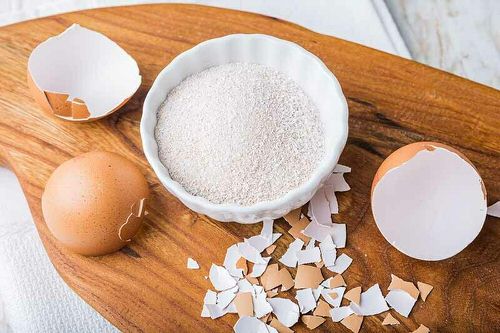
Eggshells are magic elements that can help your plants grow! They are rich in magnesium, potassium, iron, and phosphorus along with calcium carbonate (37%), which helps to plant grow lush and green.
All you have to do is to crush eggshells finely and mix them with the growing medium for best results.
Have a look at some amazing eggshell uses in the garden here and here
3. Bone Meal

Chicken or lamb meat is consumed most, you can use the discarded bones to create a bone meal. It is one of the best sources of nitrogen, calcium, and phosphorus. Edible plants like cabbage, watermelons, asparagus, peppers, and tomatoes can benefit from the additional nitrogen in the soil.
All you have to do is to dry the chicken bones in the sun and then grind them in a fine powder. Now, add it to the growing medium for best results. You can also add 2-4 spoons of this powder in a gallon of water and use it on plants.
4. Fish Fertilizer

Fish is high in nitrogen and improve soil texture. It is also loved by beneficial microbes and fungi. You can learn more about its benefits here.
Blend the leftover parts of the fish like head, tail, and bones in a blender to make them all in a fine powder. Once done, you can either mix this powder in a growing medium or add 2-4 spoons of it in a gallon of water and use it on plants.
5. Onion Fertilizer
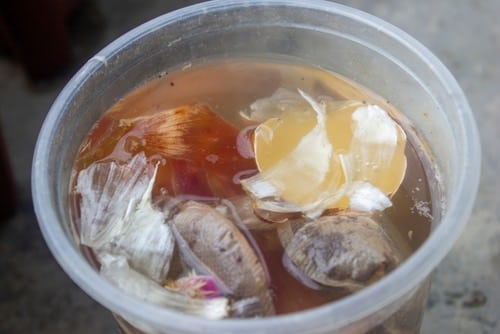
Onions can make the soil richer by adding much-needed nutrients that are important for your plant’s growth.
Puree the leftover parts of onions and mix them in a liter of water. Leave the solution for 2 days. Once the color of the solution changes, strain the liquid and use it to water the plants after diluting it in a 1:1 ratio with water. You can also make a onion skin tea, following the directions given in the link below.
Check out some amazing Onion Skin uses here
6. Coffee Grounds

Always save the coffee grounds as they can be beneficial in a lot of ways for your plants! Coffee grounds also provide a healthy dose of phosphorus and potassium. This improves the seed germination and the overall growth of the plant.
You can also add coffee grounds to the compost bin to make it rich in nitrogen, calcium, trace minerals, potassium, magnesium.
Have a look at our article on Coffee Grounds for Gardening here
7. Molasses Plant Fertilizer

The sweet, dark-chocolate-colored, syrup-like byproduct that you can make while extracting sugar from sugar beets and sugarcane is called molasses.
It is a great way to increase the microbial activity in the growing medium, which will result in much healthier growth of plants.
Mix 1-3 tablespoons of molasses with 1-1.5 gallons of water. You can use this solution as a foliar spray or pour it in the growing medium, once in 4-6 weeks, for best results.
8. Tea Fertilizer

Strain and rinse the tea leaves in a strainer to eliminate any milk or sugar residue. Spread them on tissue paper to dry. You can use them directly in the garden by spreading them on the topsoil of the plants.
You can also use tea bags as plant food. Disperse the contents of the teabag in the growing medium. It will nourish your plants every time you water by increasing nitrogen levels, improving soil structure, and giving earthworms a delicious meal to eat!
Here are some amazing tea leaves uses in the Garden
9. Vegetable Scraps Fertilizer
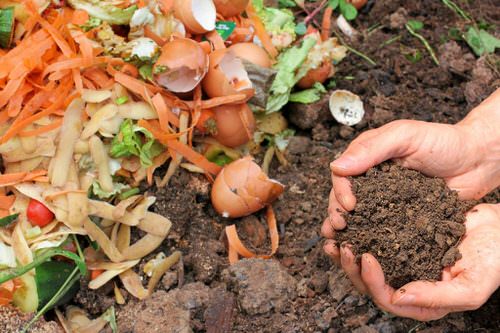
It will be a good idea to save all the vegetable and fruit scraps of the day as you can use them as fertilizer!
- Blend the scraps using a bit of water to make a thick paste.
- Once done, add a half tablespoon of Epsom salt (optional) and one-fourth tablespoon of Ammonia (optional) and blend again.
- Leave the paste in a bucket overnight.
- Dilute the paste with water in a 1:1 ratio and add it to the growing medium of plants.
- It will aid in the overall growth of the plants, resulting in better flowers and fruit production.
Check out our detailed article on organic fertilizer from vegetable scraps here
10. Pasta Water
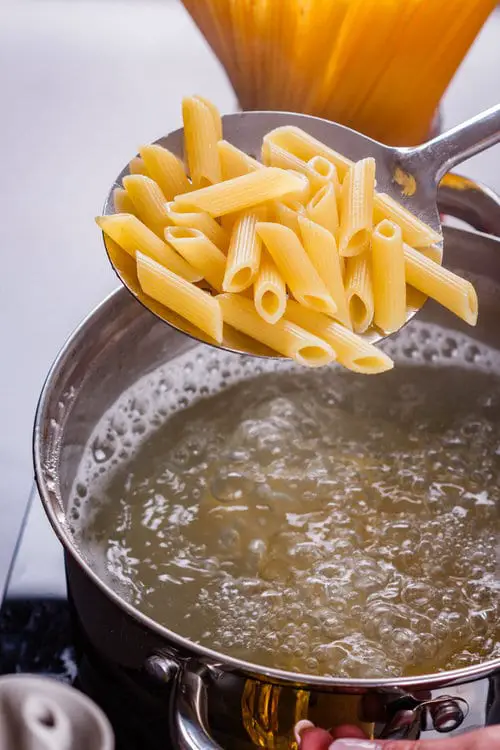
Pasta water has traces of calcium, phosphorus, iron, zinc, and potassium that helps to boost the plant’s growth by providing beneficial nutrients, resulting in fuller and lush leaves.
Just strain out the extra water after boiling pasta and let it cool before giving a good shower to your plants in the morning. Make sure the water is unsalted and free from oil or other spices.
Learn how to use pasta water for plants here
11. Rice Water

Do not drain the leftover water after washing rice for lunch, instead, give a good fertilizer boost to your plants. Rice water is rich in NPK [Nitrogen, Phosphorous, Potassium] and also produces helpful bacterias such lactobacilli and mycorrhizae that make the plant’s root robust and healthy.
If you are using strained out boiled rice water, make sure to mix it with an equal amount of water to dilute the liquid. Also, fermented rice water deters gnats, beetles, and flies.
Check out the scientifically proven rice water benefits here
12. Leftover Wine
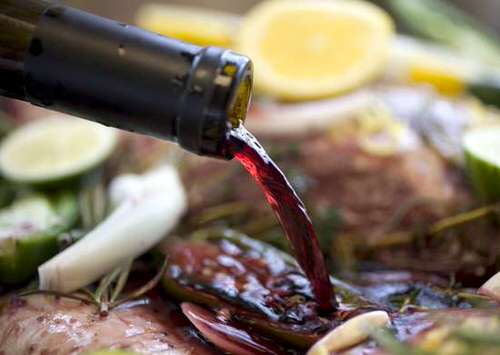
Pour 2-4 teaspoons of leftover wine into your compost heap to stimulate the growth of bacteria, which will further promote the breakdown of the organic matter in the compost.
You can also mix 4-5 teaspoons of red wine with 1-gallon water to shower your plants with a nitrogen boost. Avoid using an old bottle of the drink.
Look at some amazing wine uses in the home and garden here
13. Vegetable Water After Boiling

The essential minerals such as phosphorus, nitrogen, and calcium are leached out from vegetables into the water they are boiled in. You can easily add the goodness of these minerals to your garden by watering your plants with this solution.
This will help the plants to grow at a faster rate, resulting in lush growth with better flower and fruit production.
Make sure to cool down the water before using it on plants.
14. Leftover Milk

Milk can be an abundant source of calcium to your plants if diluted with an equal part of water.
You can mix the two in a 1:1 ratio and spray it on the plant foliage to bar away aphids and other fungal diseases. Research says milk spray is highly effective to suppress powdery mildew on pumpkins and squash.
Check out some fantastic milk uses in the garden here
15. Fruit Peel Fertilizer
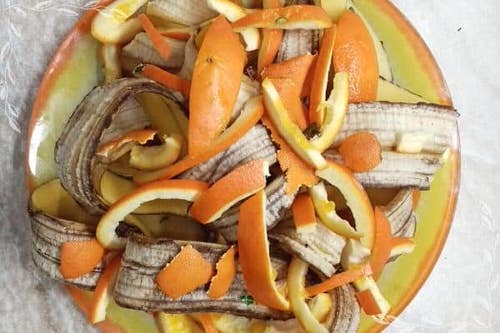
According to a study, fruit peels are rich in lipid, protein, ash, crude fiber, and carbohydrates along with many other nutrients, which can be beneficial for plants.
This report also states that peels are an important source of bioactive
compounds including anti-oxidants and proteins.
Boil peels of different fruits in water for 10-15 mins and let it steep overnight. Mix it in the ratio of 1:1 with water and use it on your plants once in 6-8 weeks for lush growth, along with enhanced flower and fruit production.


